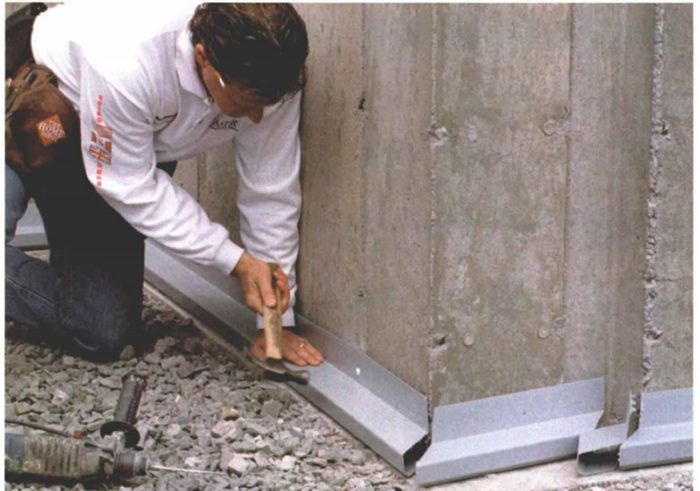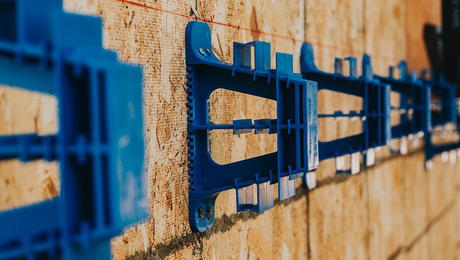Keeping a Basement Dry
Waterproofing the foundation walls is only the first step; you also need a system of drains around the foundation that silt won't render useless.

Synopsis: Rigid-foam membranes, properly installed footing drains, sump pumps and drainage flashing all contribute to keeping unwanted water out of the basement. The author explains how each of these products should be used.
I was standing in water a quarter inch deep that covered an entire basement floor. The homeowner asked me in a surprisingly calm voice, “Is there any reason the basement of a brand new million-dollar home should leak?” “Even if your house cost $100,000, it still shouldn’t leak,” I answered. I also told her that she had lots of company in her misery: A recent survey of 33,000 new-home owners revealed that 44% had leaky, wet basements. It was my guess that most of the basement problems were the result of a builder’s neglect or efforts to cut costs.
As a basement-waterproofing contractor, I fix the mistakes of others. Having been a builder myself, I can empathize with the emotional struggle to “spend more and be safe” vs. “spend less, make a profit, we should be okay.” However, no matter how much you spend, you shouldn’t end up with a basement that seeps water like a cave; it’s not good for the house or its occupants. Remember that it’s much easier (and cheaper) to build it right the first time than to dig it up later with a jackhammer. To that end, I like to seal foundation walls, drain water away from the foundation’s exterior and expel the water that does manage to leak into a house’s basement.
Sealing foundation walls
When water saturates the soil surrounding a foundation, it essentially creates a column of water whose cumulative weight increases as it rises in the backfill. This force pressing down is known as hydrostatic pressure; it drives water through joints, cracks, form ties and other foundation imperfections. The first line of defense is some sort of exterior coating on the foundation walls.
These sealants are categorized into two groups: damp proof and waterproof coatings. Damp proof coatings are typically thin asphalt-based solutions that are sprayed or painted onto the foundation’s exterior. The asphalt reduces the porosity of the concrete, but over time, it emulsifies in water and won’t seal cracks. Some contractors mix fiberglass fibers with the asphalt to strengthen the mix but still offer only a one-year warranty. The low cost of damp proofing makes it attractive to many builders, but the brief or non existent warranties (usually only a year) should make consumers wary.
Waterproof coatings, on the other hand, are a mixture of rubber and asphalt or all rubber (sometimes called elastomeric) and can cost three times as much. Like damp proof coatings, waterproof coatings are sprayed onto the foundation, but the material must be heated before application; it’s also applied in a thicker coat and is elastic enough to bridge -in. wide cracks and small holes. The key to the waterproofing’s performance is the amount of rubber in the mixture; more rubber means better performance and higher costs.
For more photos and details on keeping your basement dry, click the View PDF button below.
Fine Homebuilding Recommended Products
Fine Homebuilding receives a commission for items purchased through links on this site, including Amazon Associates and other affiliate advertising programs.

Foam Gun

100-ft. Tape Measure

Loctite Foamboard Adhesive

























